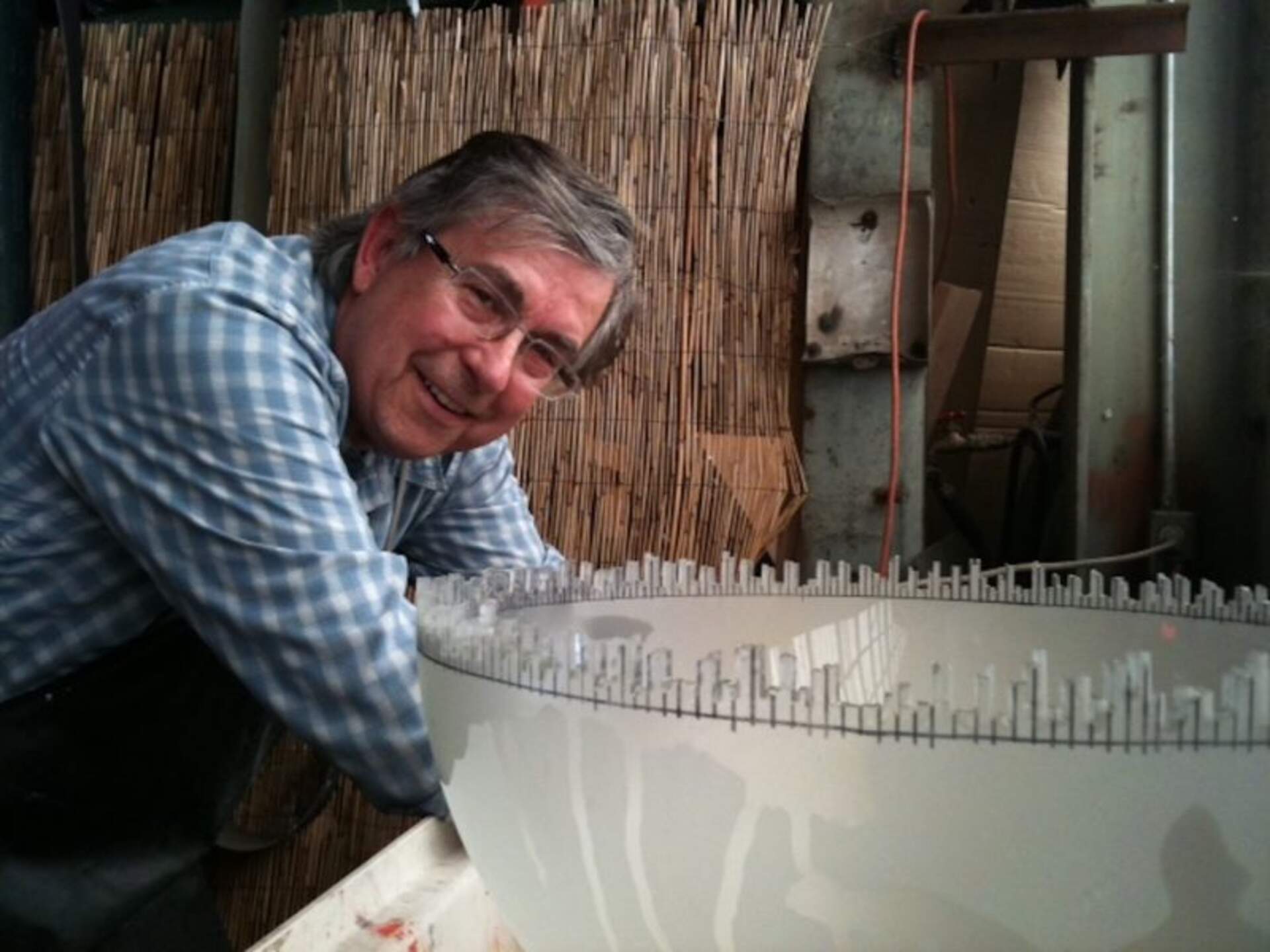Jay Musler
(b. 1949)
Born: Sacramento , California
Jay Musler is an American glass artist who was born in Sacramento, California in 1949. From 1968-1971, he attended the California College of the Arts (CCA) and received fellowships from the National Endowment of the Arts and the California Arts Council, where he studied glass under Marvin Lipofsky. Musler joined Maslach Art Glass in Greenbrae, California, in 1972 and worked there for several years until he established his own studio in the Bay Area. Many are assembled and include the application of oil paint. Musler is a second-generation Studio Glass Movement artist who’s sandblasted, painted and novel takes on glass art changed the direction of this unusual art form. While the Studio Glass Movement artists made strange objects that were lyrical and intimate, Musler, took a funkier and sometimes more surreal turn to create objects that were “not exactly beautiful, but gruddy.”
Recognized early in this career for his creative and individualistic approach to constructing glass sculpture and vessel forms, Musler has influenced the development of contemporary glass as an educator and a world-renown artist. Musler soon saw glass blowing as a means towards making art, making sculpture. At CCA, Musler’s first piece as a student was, a small bottle.
“Nothing special, but I thought it was the greatest thing,” he said. But the process was tricky and a bit dangerous… You had to grab the molten glass from the furnace with a long pipe, then wrap it around – like taffy. Once you had it under control, you’d roll it on a marver, a steel table. You could then blow into the pipe, creating a bubble by turning it and blowing into it at the same time. It takes a while, but you soon develop a rhythm and coordination.” [1]
He began making art in response to the violence, crime, and alienation that he found in modern cities. Musler makes work that is fragmented and threatening by shattering glass and constructing shapes and bowls from the broken shards. He takes inspiration from the urban environment, and his constructions often include sharp lattices and cracked forms. From his early cityscapes with strategically placed spikes of glass to his more sophisticated masks and vessels, Musler’s works have consisted of meticulously constructed layers of lamp-worked, sandblasted, and painted components. At the turn of the new millennium, Musler has created an expansive series of masks based upon travels to Central America and Mexico, and strange, latticed wall pieces that are carefully fused glass dowels painted in oil. Oftentimes glass chains hang off them, and eye-like objects float on their faces, as in “Let There Be Light” (2011). Others, like “Deep in Space” (2006), echo folk art with small wheels, and idiosyncratic objects fused to them. These works are heavy and terribly fragile.
Musler also received two awards at the Hokkaido Museum of Modern Art’s exhibition, World Glass Now in Sapporo, Japan. His signature piece, “Cityscape”, is considered to be one of the major works of 20th-century American studio crafts.
Jay Musler is in many private, public and museum collections around the world. They include Herbert F. Johnson Museum of Art, Cornell University, Ithaca, New York; Fuller Craft Museum, Massachusetts; Fowler Museum at UCLA, California; Lowe Art Museum, University of Miami, Florida; High Museum of Art, Georgia; The Museum of Art and Design, New York; Racine Art Museum, Wisconsin; Rhode Island School of Design (RISD), Rhode Island; The Contemporary Museum, Hawaii; Figge Art Museum, Iowa; Montreal Museum of Fine Arts, Canada; Renwick Gallery of American Art, the Smithsonian Institution; The American Craft Museum, New York; The Corning Museum of Glass, New York; The Metropolitan Museum of Art, New York; Los Angeles County Museum of Art, California; M.H. de Young Memorial Museum, California; The Oakland Museum, California; Detroit Institute of Arts, Michigan; Honolulu Academy of Art, Hawaii; JB Speed Art Museum, Kentucky; Milwaukee Art Museum, Wisconsin; The Toledo Museum of Art, Ohio; Washington University, Missouri; Wheaton Village Museum of American Glass, New Jersey; United States Embassy, Istanbul, Turkey; Hokkaido Museum of Modern Art, Sapporo, Japan; Kitano Museum, Tokyo, Japan; Musee de Design et D’Arts Appliques Contemporains, Lausanne, Switzerland.
